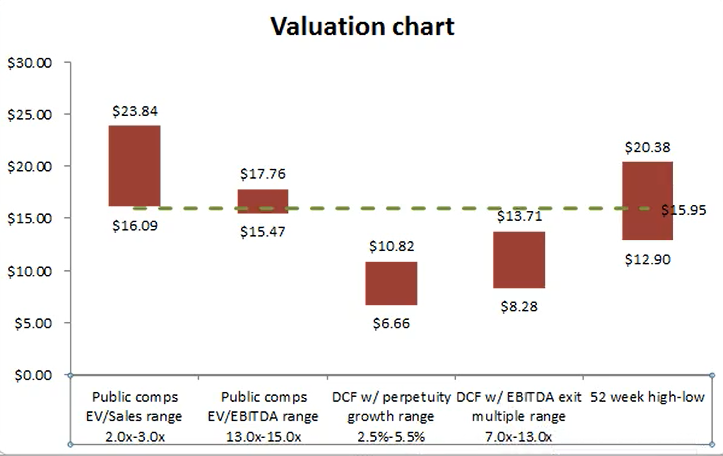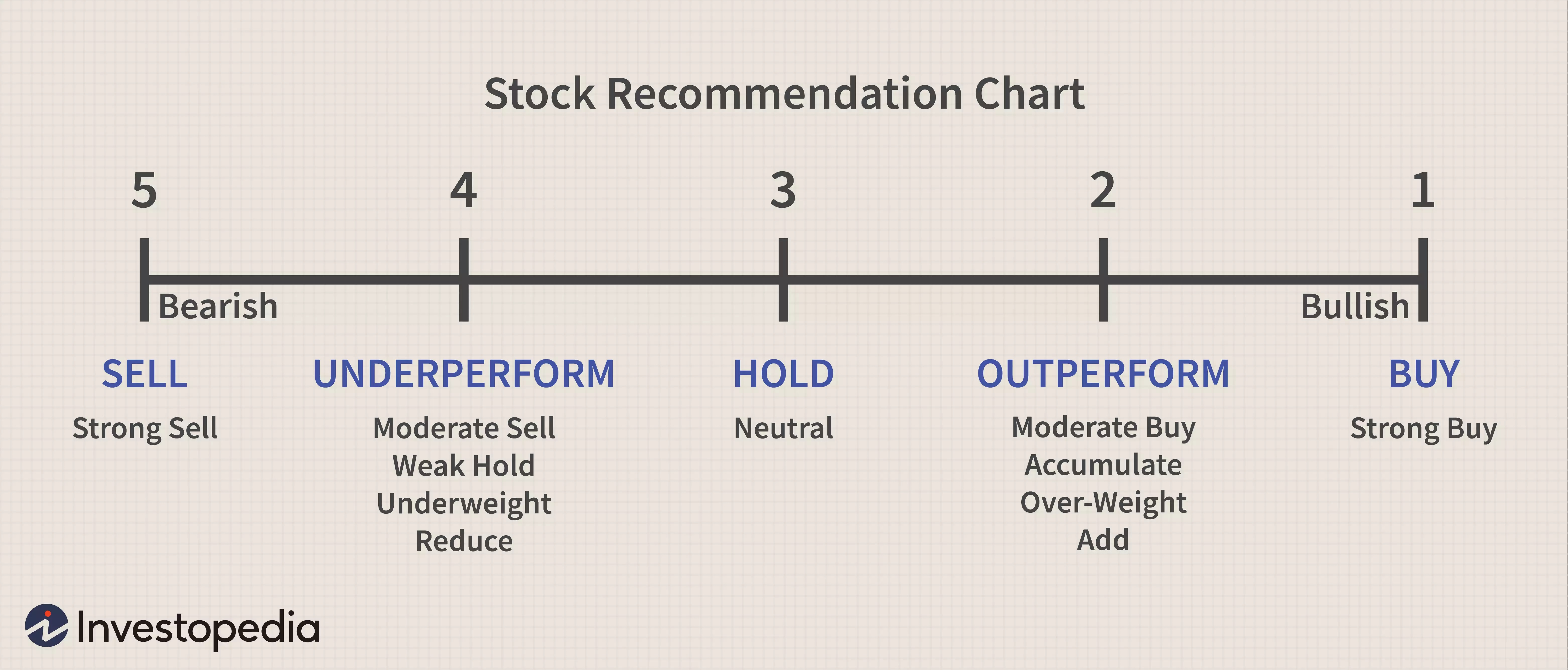Model Selection and Football Field Chart
Created by David Moore, PhD
Key Concepts
- Absolute(Intrinsic Valuation) vs Relative Valuation
- Pros and Cons
- How and When to use
- Football Field Chart
- Making Investment Decision/Recommendation
Valuation and Financial Modeling
- In a science, if you get the inputs right, you should get the output right. The laws of physics and mathematics are universal and there are no exceptions.
Valuation is not a science. - In an art, there are elements that can be taught but there is also a magic that you either have or you do not. The essence of an art is that you are either a great artist or you are not.
Valuation is not an art. - A craft is a skill that you learn by doing. The more you do it, the better you get at it.
Valuation is a craft.
Intrinsic Valuation
- Estimate cash flows for forecast period
- Estimate Terminal Value
- Estimate Cost of Capital
- Discount Cash flows and terminal value
- Adjust for leverage and divide by appropriate shares outstanding
- Make any adjustments for value included or not included above
Intrinsic Valuation Market Assumption
Valuation Myths
- A valuation is a search for the "true" value
- A good valuation provides a precise estimate of value
- The more quantitative a model, the better the valuation
Valuation Truths
- All valuations are biased. The only questions are "how much" and in which direction.
- There are no precise valuations. The payoff to valuation is greatest when valuation is least precise.
- One's understanding of a valuation model is inversely proportional to the number of inputs required for the model. Simpler valuation models do much better than complex ones.
Intrinsic Valuation Pros
- Very little influence from temperamental market conditions (Market Moods and Perception)
- Measure of what you are getting in return (for buying an asset)
- Focuses on underlying characteristics
- Forces you to think about the business and assumptions
- Eventually you will get cash flows (immunized from market perception)
Intrinsic Valuation Cons
- Requires far more inputs and information
- Present value is sensitive to key assumptions
- Inputs and assumptions are noisy and can easily be manipulated (Biases!)
- No guarantee any asset will be undervalued or overvalued
- Who is this a problem for?
Intrinsic Valuation Value Drivers
- Cash flows from existing assets
- Value added by growth of assets
- Risk of cash flows from both existing assets and growth
- When will the firm become a mature firm
When to use DCF
- Best for investors with long-term horizon, ability to move price, not swayed by market
- Easier for stable, predictable firms. Bigger payoff in the "dark"
Relative Valuation
- Identify comparables and get market values
- Standardize market value (create multiples)
- Compare standardize value to firm (or use to calculate implied price of firm)
Relative Valuation Market Assumption
Relative Valuation Pros
- Reflects market perception and moods.
- Will always have overvalued and undervalued assets
- Helps if performance is relative
- Fewer assumptions and inputs (explicit)
- Easy to implement
Relative Valuation Cons
- Undervalued can still be overvalued (just less so)
- Fails if markets can be over/under valued in the aggregate
- Still making implicit assumptions (value drivers)
- Hard to find true comparables
Relative Valuation Value Drivers
- Similar to DCF (cash flows, growth, risk)
- Making very similar implicit assumptions
When to use Multiples
- Large set of potential comparables that are priced with available common variable
- Best for investors with short-term horizon (incremental game), judged on relative benchmark.
- Can take advantage of both sides (buy undervalued, sell(short) overvalued i.e., hedge fund
Pricing
- Mood and momentum (including behavioral factors)
- Incremental information and deviation from expectation (news, rumors, gossip)
- Liquidity (Ease of trading)
- Group think
Gap between Price and Your Value
- Efficient Marketer: gap is random buy low cost index funds
- Value Extremist: Eventually price moves to value therefore buy and hold undervalued stocks
- Pricing Extremist: Price may never converge to value, no such thing as intrinsic value. Look for market mispricing and get ahead of shifts in momentum
Pricer Dilemma
- No anchor
- Reactive
- Must be able to read the crowd/mood and detect shifts to move early
Valuer Dilemma
- Uncertainty about magnitude of gap
- Uncertainty about the gap closing
- Karmic vs Catalyst approach
What now? Relative or Absolute
- Two different questions: Price vs Value
- Under certain scenarios can get similar answers
- Buying an asset:
- What are you giving up(Price)
- What are you getting in return(Value)
- Personal investment philosophy/strategy dictates approach
- Can be used as complements
- Common to use results from both methods to produce a range
Football Field Chart

Making Investment Recommendation

Example: Apple Example: Silk Road Medical
Next time
Advanced Excel